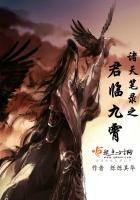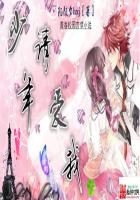Michelangelo Buonarroti
米开朗基罗
他平易,但又超凡脱俗。他无与伦比的艺术天赋和创造力全部献给了艺术,他追求艺术真善美之表现力的执著与忠诚更是感人。米开朗基罗是无愧于那个时代,无愧于巨人的称号的。他一生致力于艺术的创造,试图把真善美保存到永恒。
About Michelangelo
关于米开朗基罗
Michelangelo di Lodovico Buonarroti Simoni, commonly known as Michelangelo, was an Italian Renaissance painter, sculptor, architect, poet, and engineer。 Despite making few forays beyond the arts, his versatility in the disciplines he took up was of such a high order that he is often considered a contender for the title of the archetypal Renaissance man, along with fellow Italian Leonardo da Vinci。
Michelangelo’s output in every field during his long life was prodigious; when the sheer volume of correspondence, sketches, and reminiscences that survive is also taken into account; he is the best-documented artist of the 16th century。 Two of his best-known works, the Pietà and David, were sculpted before he turned thirty。 Despite his low opinion of painting, Michelangelo also created two of the most influential works in fresco in the history of Western art: The Scenes from Genesis on the ceiling and The Last Judgment on the altar wall of the Sistine Chapel in Rome。 As an architect, Michelangelo pioneered the Mannerist style at the Laurentian Library。 At 74 he succeeded Antonio da Sangallo the Younger as the architect of St。 Peter’s Basilica。 Michelangelo transformed the plan, the western end being finished to Michelangelo’s design, the dome being completed after his death with some modification。
In a demonstration of Michelangelo’s unique standing, he was the first Western artist whose biography was published while he was alive。 Two biographies were published of him during his lifetime; one of them, by Giorgio Vasari, proposed that he was the pinnacle of all artistic achievement since the beginning of the Renaissance, a viewpoint that continued to have currency in art history for centuries。 In his lifetime he was also often called Il Divino (“the divine one”)。 One of the qualities most admired by his contemporaries was his terribilità, a sense of awe-inspiring grandeur, and it was the attempts of subsequent artists to imitate Michelangelo’s impassioned and highly personal style that resulted in Mannerism, the next major movement in Western art after the High Renaissance。
米开朗基罗生活在意大利社会动荡的年代,颠沛流离的生活使他对所生活的时代产生了怀疑。痛苦失望之余,他在艺术创作中倾注着自己的思想,同时也在寻找着自己的理想,并创造了一系列如巨人般体格雄伟、坚强勇猛的英雄形象。
《大卫》就是这种思想最杰出的代表。大卫是圣经中的少年英雄,曾经杀死侵略犹太人的非利士巨人哥利亚,保卫了祖国的城市和人民。米开朗基罗没有沿用前人表现大卫战胜敌人后将敌人头颅踩在脚下的场景,而是选择了大卫迎接战斗时的状态。在这件作品中,大卫是一个肌肉发达,体格匀称的青年壮士形象。他充满自信地站立着,英姿飒爽,左手拿石块,右手下垂,头向左侧转动着,面容英俊,炯炯有神的双眼凝视着远方,仿佛正在向地平线的远处搜索着敌人,随时准备投入一场新的战斗。大卫体格雄伟健美,神态勇敢坚强,身体、脸部和肌肉紧张而饱满,体现着外在的和内在的全部理想化的男性美。这位少年英雄怒目直视着前方,表情中充满了全神贯注的紧张情绪和坚强的意志,身体中积蓄的伟大力量似乎随时可以爆发出来。与前人表现战斗结束后情景的习惯不同,米开朗基罗在这里塑造的是人物产生激情之前的瞬间,使作品在艺术上显得更加具有感染力。他的姿态似乎是在休息,但躯体姿态表现出的某种紧张情绪,使人有强烈的“静中有动”的感觉。雕像是用整块的石料雕刻而成,为使雕像在基座上显得更加雄伟壮观,艺术家有意放大了人物的头部和两个胳膊,使得大卫在观众的视角中显得愈加挺拔有力,充满了巨人感。这尊雕像被认为是西方美术史上最值得夸耀的男性人体雕像之一。
Key words & Sentences
关键词句全知道
Michelangelo’s David is just one of the artist’s many masterpieces。
米开朗基罗的《大卫》雕像是他的许多杰作之一。
What about Michelangelo or Picasso· Was painting a hobby for them, too·
米开朗基罗跟毕加索呢· 画画对他们来讲也是一种嗜好吗·。
Rodin climbing life, and finally to board another peak after Michelangelo。
罗丹一生攀登,并终于登上米开朗基罗之后的又一高峰。
Michelangelo is considered to be one of the greatest artists in renaissance。
米开朗基罗被认为是文艺复兴时期最伟大的艺术家之一。
Only a few feet away is Michelangelo’s small wax model for one of his slaves。
就在离他不远处是米开朗基罗娇小的蜡质雕像,那是为他的一位奴隶制作的。
Art is an acquired taste–no one is born knowing that Michelangelo is wonderful。
艺术是一种后天养成的兴趣,没有人生来就知道米开朗基罗作品的美妙。
In Italy, Dario Cecchiniknown as the Michelangelo of meat elevates grilling to an art form。
意大利的达利欧就像肉品界的米开朗基罗,把烤肉升华为一种艺术。
Experts are hailing the clean-up of Michelangelo’s statue David, half-way through the restoration。
米开朗基罗的“大卫”雕像正在清洁和修复中,专家们为此鼓掌欢呼。
One of the greatest sculptors of the Italian Renaissance, and probably of all time, was Michelangelo。
意大利文艺复兴时期——也可能是所有时代——最伟大的雕塑家之一是米开朗基罗。
Michelangelo, though, wasn’t very interested in school and spent much more time drawing than studying。
尽管米开朗基罗身在学校,他就是无心向学,把大量的读书时间用来绘画。
There are many books about Michelangelo。
关于米开朗基罗的书很多。
Whether in painting sculpture or architecture Michelangelo’s influence on the western art has been immense。
无论是绘画,雕塑还是建筑,米开朗基罗对于西方艺术的影响都是深远的。
Pope Paul III asked Michelangelo to paint the wall of the Sistine Chapel above the altar。
教皇保罗三世任命米开朗基罗为西斯廷教堂祭坛上方的墙壁作画。
Rodin is the most famous sculptor since Michelangelo: people love Rodin, Michelangelo is merely respected。
罗丹是自米开朗基罗之后最著名的雕刻家:人们热爱罗丹,对米开朗基罗则只是尊敬。
He also studied the hundreds of letters written by Michelangelo to more fully understand the artist’s personality。
他还研究了数以百计的米开朗基罗书写的信件,以便更充分地了解这位艺术家的个性。
To Michelangelo, the master sculptor’s job was to clear away what was not the image and reveal the masterpiece inside the stone。
对于米开朗基罗来说,雕刻大师的任务就是把那些不属于形象的部分清理掉去揭露出石头内部的那个杰作。
His group has already created a high-quality rendering of Michelangelo’s David that can be viewed with the Lighting Sensitive Display。
他的小组已经为米开朗基罗的大卫雕像制作出可用亮度感应显示器观赏的高画质影像。
In the biographies of great artists, men like Leonardo and Michelangelo, we hear the first references to the glories of practical activity。
里奥纳多和米开朗基罗等大艺术家的传记中首次提到了实践活动的伟大性。
Michelangelo is a master of the depiction of light。
米开朗基罗是处理光影的大师。
A 26-year old Michelangelo sculpted David, who is more than 4 meters high, between 1502 and 1504 from a single piece of poor quality marble other sculptors had rejected。
在1502到1504年间,26岁的米开朗基罗利用一块其他雕刻家都看不上眼、质量很差的大理石创作了4米多高的“大卫”雕像。
In 1501 Michelangelo began his next masterpiece a statue of the Bible hero David。
在1501年,米开朗基罗开始创作另一件作品,圣经里大卫的英雄雕像。
Let’s Talk!
开始交流吧!
Mike: Look, it’s the David sculpture。
麦克:看,这是大卫雕像。
Daisy: It’s so beautiful。
黛西:好漂亮啊。
Mike: It’s a wonderful artwork。
麦克:这是个伟大的艺术作品。
Daisy: I don’t know anything about art, but I really like it。
黛西:我虽然对艺术一窍不通,但我真的很喜欢这个雕像。
Mike: I believe it’s Michelangelo who made it。
麦克:我记得是米开朗基罗雕刻成的。













